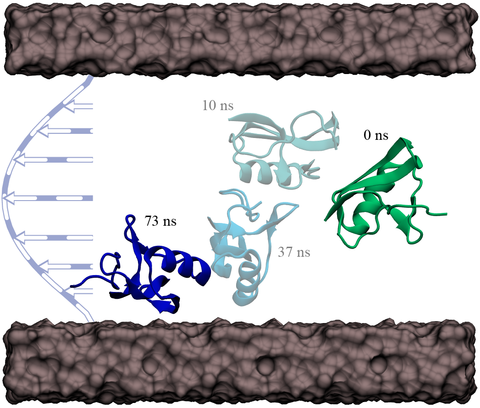Modeling Pressure-Driven Transport of Proteins through a Nanochannel

Reducing the size of a nanofluidic channel not only creates new opportunities for high-precision manipulation of biological macromolecules, but also makes the performance of the entire nanofluidic system more susceptible to undesirable interactions between the transported biomolecules and the walls of the channel. In this manuscript, we report molecular dynamics simulations of a pressure-driven flow through a silica nanochannel that characterized, with atomic resolution, adsorption of a model protein to its surface. Although the simulated adsorption of the proteins was found to be nonspecific, it had a dramatic effect on the rate of the protein transport. To determine the relative strength of the protein-silica interactions in different adsorbed states, we simulated flow-induced desorption of the proteins from the silica surface. Our analysis of the protein conformations in the adsorbed states did not reveal any simple dependence of the adsorption strength on the size and composition of the protein-silica contact, suggesting that the heterogeneity of the silica surface may be a important factor.